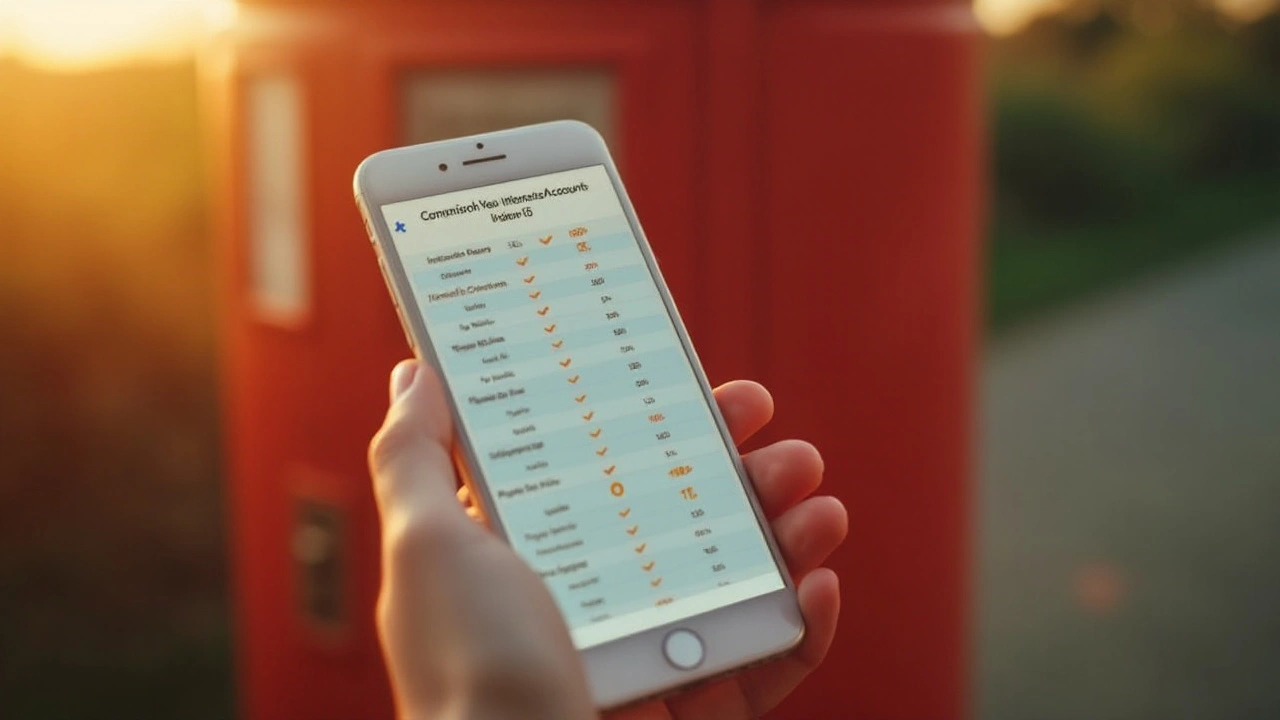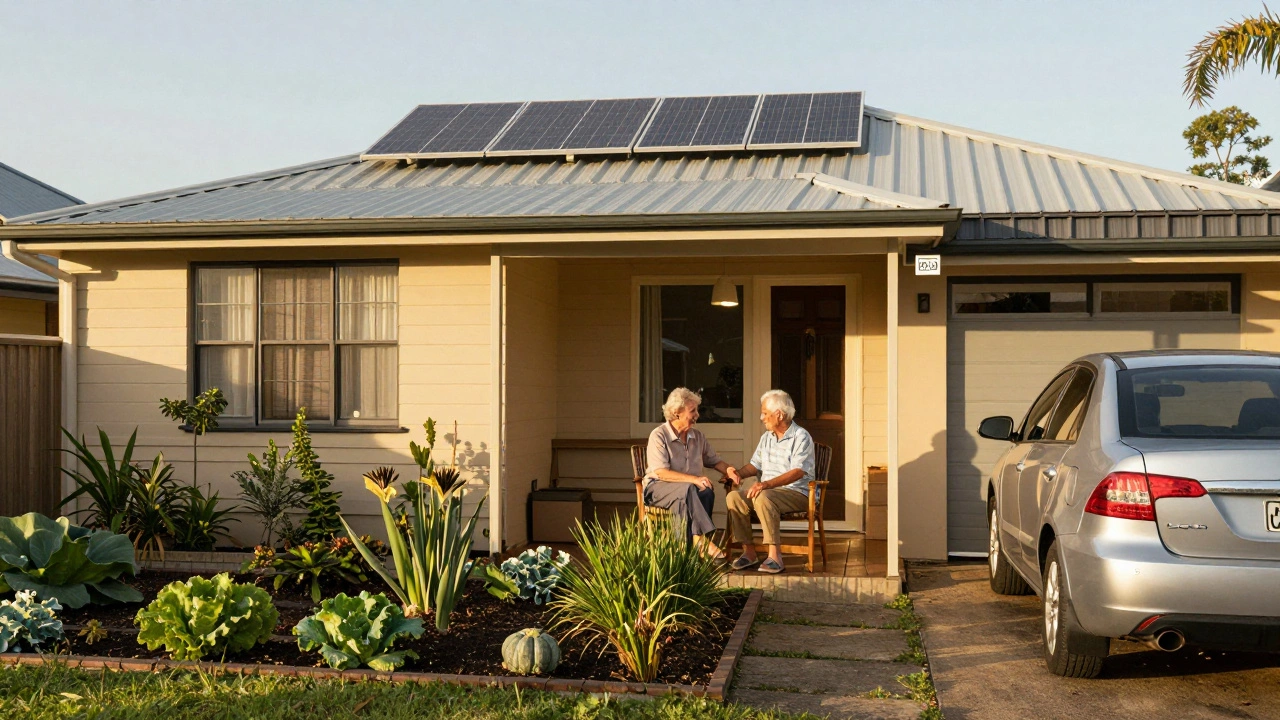Finding the best bank for a savings account is a crucial step in securing your financial future. The choice goes beyond simply selecting a place to park your cash. It's about making sure your money is working as hard for you as you worked to earn it. One size does not fit all, and what might be perfect for someone else could fall short for your needs and goals.
Interest rates can fluctuate, affecting how much your savings grow over time. But interest rates aren’t the only factor to consider. You should think about accessibility, convenience, customer service, and fees. Online banks often offer better rates due to lower operating costs, but traditional banks sometimes provide a level of personal service and physical branch convenience that online banks don’t.
In this journey, we'll explore the ins and outs of what makes a savings account valuable. By the end, you'll be well-equipped to make a choice that will best support your financial future in 2024 and beyond.
- Understanding Interest Rates
- Online vs. Traditional Banks
- Evaluating Fees and Accessibility
- Top Picks for 2024
Understanding Interest Rates
Interest rates are perhaps the heartbeat of any savings account. They dictate how much your money will grow over time, and understanding them deeply can give you the upper hand in selecting the right bank. Typically, an interest rate is expressed as an annual percentage yield (APY), which reflects the real rate of return on your investment by considering the effect of compounding. This compounding happens regularly within the year, different from the nominal rate that doesn't account for this. When banks compete for your deposit, as a potential consumer, the APY is what truly captures your attention. It tells you, in clearer terms, how much you will earn on your savings, simplifying the often-complex nature of interest rate evaluations.
The concept of interest rates in savings accounts varies extensively from bank to bank. These rates are influenced by the broader economic environment—including the federal funds rate, which the Federal Reserve uses as a tool to control inflation and stimulate or cool the economy. When the economy is booming, the Fed might increase rates to keep inflation in check. Conversely, in harder times, it might lower rates to incentivize borrowing and spending to boost the economy. For example, during the 2020 pandemic crisis, there was a significant drop in rates to support economic recovery. Understanding this dynamic can not only enhance your awareness of economic patterns but also help you time your choices when opening a savings account.
Choosing a bank based on its interest rate offerings isn't merely about finding the highest number out there. It's essential to look at how often interest is compounded—daily, monthly, or annually. More frequent compounding can considerably amplify your earnings. Imagine a scenario: Bank A could offer an APY of 1.5% with monthly compounding, while Bank B offers the same rate with daily compounding. Despite offering the same percentage, Bank B would result in a slightly higher yield on your savings due to the more frequent compounding interval. This subtle nuance can be a game-changer when viewed over the long term. A savings account, finely tuned with a strong interest rate and favorable compounding frequency, becomes much more than a resting ground for your savings.
Another critical factor is the minimum balance requirement needed to achieve those advertised top rates. Many banks tag their highest interest rates with a catch—a minimum deposit and balance threshold, which might not be apparent in the flashy percentages they display upfront. It is always wise to read through the fine print and evaluate whether these requirements align with your current financial situation. Here, a little introspection goes a long way: assess your financial goals and your potential to sustain the minimum balance without stress. Many accounts also include tiered rates, which offer different rates based entirely on how much is saved, rewarding larger balances with better rates.
"Understanding interest rates is like learning the dynamics of growth itself; a wise saver sees beyond the figures and foresees future possibilities." - An adaptation of Warren Buffett's philosophy on investing.
Given the complexities of the economic landscape, and how these might affect interest rates over the coming years, being informed is your best bet. Monitoring publications like the Wall Street Journal or the financial section of your preferred news outlet can keep you updated on the economic indicators affecting rates. Banks such as Ally Bank and Citi have consistently been rated among the top for offering competitive rates, but remember to consider the whole package. Finally, regularly reviewing available options—even after opening an account—ensures your decision remains the best fit for your evolving financial landscape.

Online vs. Traditional Banks
As you navigate the world of savings accounts, you inevitably find yourself at a crossroads: Online banks or traditional banks? Both options offer unique advantages, and the right choice largely depends on your personal preferences and financial goals. Let's dive into what each offers and how to decide which fits your needs best.
Online banks have emerged as a compelling alternative to brick-and-mortar institutions. One of their standout features is the ability to provide higher interest rates on savings accounts. These banks operate without the overhead costs associated with physical branches, allowing them to pass those savings onto customers. In 2024, some online banks offer rates as high as 4.5%, a significant increase compared to the national average at traditional banks hovering around 0.04%. These rates can make a considerable difference in how quickly your savings grow over time.
However, traditional banks come with their own set of strengths. Many individuals appreciate the personal touch and the ability to interact face-to-face with banking staff. This can be especially important for those who value personalized customer service or need assistance with complex financial products beyond savings accounts. Also, traditional banks often provide a wider array of financial services under one roof, offering convenience for customers looking to streamline their banking experience.
Another factor to weigh is accessibility. While online banks provide easy access to your accounts through mobile apps and websites 24/7, traditional banks typically offer a blend of digital and in-person services. This hybrid model might appeal to individuals who enjoy digital convenience alongside the security of knowing they can visit a branch if necessary. That said, the prevalence of digital banking has prompted even traditional institutions to bolster their online offerings, blurring the lines between the two.
Sometimes, the choice comes down to fees and flexibility. Online banks often boast fewer fees; no monthly maintenance costs or ATM fees are appealing incentives. However, if you anticipate needing in-person services frequently, you might find the fees at traditional banks a worthy trade-off for their range of services. According to a 2023 study by Bankrate, about 67% of Americans still use a physical bank branch to manage their accounts at least once a month, indicating there's still a significant demand for traditional banking services.
It's clear both online and traditional banks have their virtues. One isn’t inherently superior to the other; it hinges on what you value most in your banking experience. If high rates and lower fees lead the list, online banks might align with your goals. But if personalized service and a broad service spectrum hold sway, then traditional banks could be the way to go. Whichever path you choose, make sure it aligns with your financial goals to make your money work smarter for you.

Evaluating Fees and Accessibility
When aiming to find the best bank for your savings accounts, evaluating fees and accessibility becomes paramount. This is not merely about pinpointing which bank has the lowest charges; it's about understanding how these elements align with your lifestyle and spending habits. Bank fees can take various forms, such as maintenance fees, withdrawal fees, or even transfer charges, which could eat into your hard-earned savings if not carefully managed. Thus, looking at banks that offer fee waivers or don't charge common fees is essential for maximizing your savings.
Accessibility is another critical component that often goes overlooked. Consider how often you need to access your funds and whether you prefer doing so online or in person. Online or mobile access provides convenience, particularly in today's fast-paced world where time is often in short supply. However, traditional banks with physical branches may be appealing for those who frequently require in-branch services or feel more secure with face-to-face interactions. Imagine the peace of mind knowing you can walk into a bank anytime, with staff ready to assist you in resolving inquiries.
Some banks have taken strides to blend both elements, recognizing the market for consumers eager for digital solutions coupled with personal service touchpoints. It's worth identifying if your preferred bank offers hybrid models that balance online platforms with brick-and-mortar locations. As an esteemed banking expert stated, "Today's customers seek agility and human interaction in harmony. Banking solutions must cater to both simultaneously." How right he is, especially in this era where digital experiences often lack the warmth of human touch.
A report shows millennials rank access to digital services as crucial, while baby boomers value in-person services higher. This clash in preferences feeds into why choosing the right bank is so personal. Here’s a quick breakdown to illustrate the importance of fees and accessibility:
| Factor | Impact on Savings |
|---|---|
| Maintenance Fees | Can reduce the net interest earned on savings. |
| Withdrawal and Transfer Fees | Frequent charges can erode savings, especially in low-interest accounts. |
| Accessibility | Influences convenience and satisfaction, impacting users’ saving behavior. |
Spend time evaluating these factors carefully. Whether through scouring bank websites for free checking accounts, examining fine print, or reading consumer reviews, understanding where costs and convenience intersect will empower you to make the best choice. Sometimes the extra effort in investigation leads to saving significant amounts over time, and isn't that what a solid financial planning strategy is all about?

Top Picks for 2024
Choosing the best banks for your savings accounts in 2024 requires some research. Let's dive into some options that stand out this year. It's important to consider both online and traditional banks, as each offers distinct advantages. For those who prefer accessing their bank from the comfort of their own home, online banks such as Ally Bank and Marcus by Goldman Sachs offer competitive interest rates without monthly maintenance fees. These banks are consistently mentioned by financial experts for their solid performance and customer satisfaction. In contrast, if you value face-to-face interactions and personalized advice, look into traditional banks like Chase or Wells Fargo. They provide comprehensive services that may suit those who want the security of a large institution with the perk of physical branches.
One noteworthy option for 2024 is Synchrony Bank, which not only offers a robust interest rate but also integrates some traditional bank features such as a vast ATM network. While Synchrony might not provide the same level of in-person support as some brick-and-mortar banks, its hybrid approach offers flexibility that's becoming increasingly popular. Not far behind is Discover Bank, known for combining excellent customer service with remarkable online capabilities. Discover provides tools and resources that help you track and maximize savings, making them highly appealing for tech-savvy users.
If you’re curious about how banks stack up in terms of numbers, consider this comparison:
| Bank | Interest Rate | Noteworthy Feature |
|---|---|---|
| Ally Bank | 4.00% | No minimum balance requirement |
| Marcus by Goldman Sachs | 3.50% | High-yield savings with no fees |
| Synchrony Bank | 3.85% | Access to thousands of ATMs |
| Discover Bank | 3.25% | 24/7 customer service |
As always, you should double-check the current interest rates and terms, as these can change frequently due to market conditions. Financial columnist Beth Kobliner once remarked,
"The goal isn’t to become rich quickly but to save steadily over time. Compound interest is your best friend."This mindset can guide your decision, pointing you towards a bank that not only offers attractive rates but also lines up with your preferred method of saving. With options like those mentioned, 2024 promises to be a year where your savings can grow efficiently and securely.









